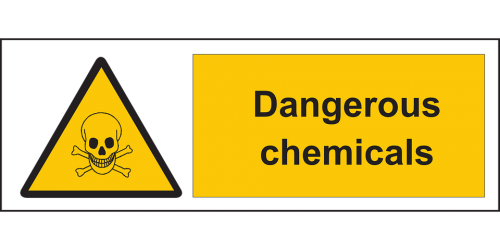How to develop an effective safety culture in the workplace?
In the current economic and health climate, the phrase “Good safety is good business” is particularly relevant. In addition to the factors of productivity or profitability, safety in the workplace plays a full part in company performance. In fact, looking after employee health and safety guarantees the company’s sustainability. But how do you develop a safety culture in the workplace? What actions should be taken to improve occupational safety? Discover how to combine protection and prevention in companies by means of 3 fundamental pillars.
What is safety culture in the workplace?
Instilling a strong safety culture in any company contributes to employees’ physical and mental health. But to develop an effective safety culture in the workplace, it is important to understand this rapidly growing concept.
Definition
In the absence of an official definition, the one proposed by the Institute for a Culture of Industrial Safety (ICSI) should be used. The term “safety culture” refers to “the ways of doing and thinking that have consequences for safety”.
This means good safety practices impact both the attitudes and the thinking of employees. Integrated into the company’s organisational culture, safety culture in the workplace influences decisions, jobs, services, etc. It is also intrinsically linked to the company’s safety function. But who is involved in this role?
The company’s safety function: Who does what?
According to the tenth principle of the European Charter of Social Rights, “workers have the right to a high level of protection to their health and safety at work and to a working environment adapted to their professional needs (…)”.
Based on this, many countries have adopted legislative tools to give employers a safety function in their companies. They are responsible for the health and safety of their employees. They are expected to be proactive and to take measures to avoid and prevent the risk of falls, chemical hazards, psychosocial risks, etc.
But they are not the only ones who have to fulfil certain obligations. In fact, employees also have to look after their own health, as well as look after their colleagues’ safety. This means they must follow the instructions and guidelines given by their employer.
Now that the concept of “safety culture” has been defined and its key players identified, here are the levers which the company can use to implement it.
What are the 3 essential pillars for developing a safety culture in the workplace?
The world of work is constantly changing. Whether this is due to pandemics, global conflicts, or new regulations, companies are increasingly concerned with their employees’ well-being.
Instead of opting for arbitrary, fixed principles, a safety culture in the workplace should be built up gradually and adapted to the company’s particular needs and concerns. In fact, each individual company has its own special characteristics and faces different risks and constraints.
A custom-made safety culture, the key to efficient risk management, should be built around 3 fundamental pillars:
- Technical solutions, which involve protective equipment, premise layout, fault reporting, tool checking, etc.;
- Management systems, which encompass regulations, procedures, training, process implementation, etc.;
- Organisational and human factors, include human behavior, working conditions, employee skills, health status, the role of managers, etc.
Obviously, developing a safety culture in the workplace is not just about pinning up posters in the break room or sending sporadic reminders by email. Making security a major business issue requires time and resources. So, how can you develop OHS culture1 using these 3 levers? Here are some practical ideas about how to effectively prevent risks for your employees.
4 ideas to improve safety in the workplace
Improving health and safety in the workplace requires prevention, information and training. Here are 4 tips that can easily be applied by managers or team leaders for a successful safety culture.
1) Assess occupational risks
Establishing a diagnosis of hazards makes it easier to implement preventive safety measures. Assessing the work premises allows you to know which regulations need to be better applied, which adjustments need to be made, which working methods need to be improved, etc.
2) Adapt the workspace
Once the risk assessment has been performed, protecting employees involves tangible actions such as:
- Providing PPE2 (helmet, gloves, safety shoes
- Changing working hours if necessary
- Marking out traffic zones
- Decreasing work’s repetitiveness
- Providing ergonomic equipment in the workplace
For example, to comply with PRM standards, you need to install specific equipment, such as adapted sanitary facilities, access ramps, or guide strips.
3) Train staff
All parties must feel involved and have the resources to learn about preventing accidents, injuries, and illnesses. Implementing an occupational health and safety programme is effective at achieving this. Some ideas on how to do this might include fun and engaging training materials, themed workshops about identified risks, making the internal rules available in several languages, providing training courses for new employees, etc.
4) Communicate transparently
Effective safety culture in the workplace relies on good communication. For example, scheduling a dedicated time to talk about safety during team meetings ensures that procedures are understood by all and, by extension, encourages compliance with these helpful steps.
This more positive safety approach makes it easier to identify and report minor incidents or near accidents and handle alerts. By promoting dialogue between management and employees, safety becomes a central concern for everyone.
Are you looking to improve security in your company? Are you thinking about an overall improvement strategy to ensure your employees’ health and safety? Manutan helps you develop your workplace safety culture so you can reap the benefits of a safe work environment. Download our “Well-working” white paper and make safety your priority.






